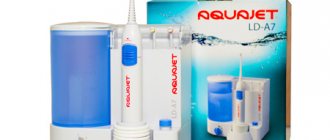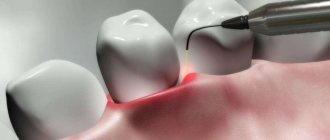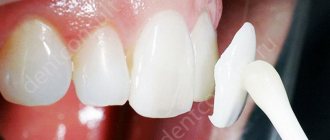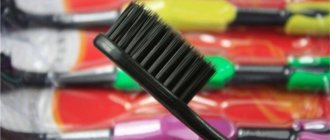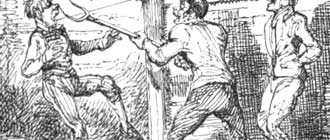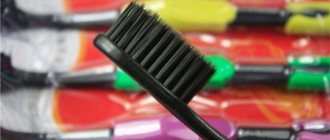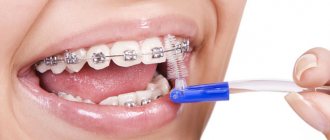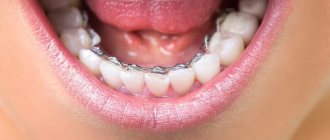Bite defects, both in adults and children, develop gradually, with varying degrees of intensity. This is determined by a number of provoking factors, some of which are due to external negative influences, and the other part is of a genetic nature.
In the arsenal of modern medicine there are many ways to solve dental problems, including malocclusions. The choice of therapeutic treatment method is the prerogative of a specialized specialist.
Only an orthodontist, after an objective assessment of the clinical picture of the condition of the oral cavity, can determine the most optimal design option for eliminating the defect.
Indications for use
The following indications are defined for the use of the T4A system:
- anterior crowding of the teeth of the lower jaw row;
- bite pathologies within the framework of the Angle classifier;
- anterior type abnormal bite;
- overbite;
- irregular structure of the lower dentition;
- due to medical reasons, it is impossible to use braces of any kind;
- as a preventative measure after using braces and consolidating the positive dynamics obtained during treatment;
- pronunciation defects;
- bruxism;
- strong torsion of individual fragments of the jaw row;
- violation of swallowing functions;
- the need to correct anatomical deviations in the structure of the jaw apparatus;
- to eliminate bad habits in children and adolescents - biting the nail plate, keeping pencils and other foreign objects in the mouth;
- crossbite, which occurs when the jaws do not close together.
Indications and contraindications
Factors that determine the advisability of using the correctors under consideration include:
- The need to align frontal units that are incorrectly positioned;
- The need to increase the length of the maxillary arch;
- Carrying out therapeutic prevention and retention after wearing braces;
- Eliminating crooked teeth and correcting malocclusions;
- Getting rid of bad habits, including mouth breathing;
- Relieving increased muscle tone that causes discomfort.
Limiting contraindications are:
- Diagnosed mental and neurological disorders;
- Impaired respiratory functionality of the nasal canal;
- Abnormal development of crossbite.
As practice shows, the use of trainers in adolescence helps eliminate problems associated with incorrect arrangement of elements of the dentition, as well as improper development of the bite.
Effect of treatment
The use of a corrective apparatus helps restore the functionality and aesthetics of the jaw area, disturbed by abnormal manifestations. The lower part of the T4A trainers is similar in its effect to orthodontic devices, providing step-by-step correction of defects. The success of treatment is noted when correcting distal, open and deep bites, the severity of which belongs to the first or second class of development. For more complex defects, it is recommended to use combined techniques or choose alternative means.
With the help of a corrector, the natural state of the jaw muscles is also restored. The design ensures that the tongue gets used to its natural position and eliminates the habit of biting the tongue during sleep. Thus, during the period of occlusion formation, wearing a T4A mouth guard helps to correct the child’s myofunctional habits.
Design and characteristics
In terms of external design and design specifics, the devices are strikingly different from conventional orthodontic models. The device contains the following components:
- labial protrusion - intended for forceful fusion onto the anterior organs;
- guide channels - they are assigned the role of dental function. Made in an arched shape, they stimulate the processes of alignment of the crown part of the teeth;
- training tongue - it can be seen from above the dental canal, its task is to form the most correct position of the tongue and prevent it from falling out;
- language limiter - has a positive effect on the quality of respiratory processes in the nasopharynx;
- lip bumper and sides - thanks to their presence, the product is securely held in the oral cavity during night sleep;
- arcuate threshold – effectively eliminates muscle tension and spasm. Activates the work of the oral muscles. Located in the center of the device;
- distal ends - the second molars are placed under them;
- wing-shaped at the base of the model - it is intended to strengthen the jaw and temporal joints, as well as slightly correct the position of the moving part of the jaw.
Why do you need to wear retainers after braces? We will talk about this in our next article. And here you can see a photo of plates for straightening teeth.
In addition to design features, the devices are also characterized by the type of correction performed - for this purpose, a special system has been developed that involves the use of models of two options.
Blue (initial)
Effective in the initial treatment process. The soft silicone tray applies light, gentle pressure to the coronal area.
The increased elasticity and flexibility of the component allows the product to be worn together with expansion structures of the jaw arches. With this combination, a lasting result is achieved just a few months after the start of the course of therapy.
Red (final)
The red trainer performs the finishing function. Externally, it is absolutely identical to the previous one - the main difference is the color scheme and denser, harder material. It increases the pressure on the organs compared to the blue product, giving a slightly greater load.
While the patient uses the red trainer, the jaws develop the correct formation relative to each other, the teeth are aligned, and the habit of correct bite is formed.
How does it work?
The operating principle of this design is as follows: under constant pressure, the muscles get used to functioning correctly, evenly distributing the load . Due to this, the teeth gradually return to their normal position.
How an orthodontic dental trainer works, watch the video:
The complexity of the actions of the mouth guards makes it possible to eliminate both the cause and the consequences of pathologies of various elements of the jaw apparatus.
Teeth
Thanks to the use of a trainer, it is possible to correct the crowding of crowns, their rotation around their axis, or their advancement forward or backward in relation to the general row.
Leveling occurs due to the pressure of the labial arches and technological recesses that accurately follow the relief of the crowns.
Due to the low height of the labial arches, the trainer can be used in conjunction with other devices that enhance the therapeutic effect. Basically, wire jaw expansion devices Crozat, BWS or Q-Helix are used for this.
Combined use can reduce the treatment period to 4–6 months.
Bite
The peculiarity of the T4A double-jaw trainer is that the position of the lower jaw is programmed. This allows you to achieve results not only with incorrect position of the crowns, but also with an abnormal bite.
Due to its design features, the device copes well with the first and second classes of distal deep and open bites .
More complex anomalies require long-term treatment using other orthodontic devices.
Functions and muscles
The device is able to restore normal muscle tone and eliminate myofunctional changes due to the following elements:
- lip bumper – reduces muscle tone;
- and the stopper allows you to adjust the position of the tongue, preventing it from being placed between the teeth. In addition, thanks to their effects, proper swallowing, breathing and diction are normalized;
- the wing-shaped shape of the product contributes to orthopedic support of the temporomandibular joint.
Operating principle
The principle of operation of the T4A system is the constant force pressure of the labial arch on the teeth. The organ canals are designed in such a way that the force of influence on their lingual surface is minimal.
This is how the jaw gradually expands to the desired size. The muscle tone of the lower dentition decreases somewhat and the bite is leveled.
To ensure that the impact force is maintained at the required level, the two trainer options described above are used in combination. At the same time, the transition from blue to red should take place in stages. At first, the design is worn only during the day, then worn around the clock.
What it is?
The T4A trainer is a one-piece multifunctional design that looks like a boxing mouth guard. The product is made of flexible transparent material.
The main purpose of this device is to restore the correct position of the dentition and eliminate myofunctional problems by reducing the muscle tone of the jaw apparatus.
Essentially, the use of trainers is aimed at eliminating the root cause of crooked teeth. In addition, they help to form the correct position of the tongue, correct the process of swallowing and breathing, and also eliminate diction disorders.
Thanks to constant use, the muscles are rebuilt to a new mode of functioning and the resulting effect is consolidated.
This system is designed to eliminate problems with bite and incorrect position of teeth for children over 10 years old . In some cases, its use is also possible in the treatment of adults.
Design features
Trainers are fundamentally different from traditional orthodontic systems not only in their operating principle, but also in their design features. T4A is a molded construction made of silicone and polyurethane. It is made in the form of a two-jaw mouthguard with special channels for the dentition .
The channels accurately follow the semicircular shape of the jaw arch, which allows for precise fixation of the device. The dental canal is limited by labial arches, which are the outer part of the mouth guards facing the lips. The main therapeutic effect is the pressure of the labial arch on the teeth.
The height of the arches is designed to only partially overlap the gums along the alveolar ridge line, which makes the process of wearing the system as comfortable as possible.
Also, the trainer is equipped with a tongue stop and a lip bumper . These two elements help relieve excessive tension in the jaw muscles and form the correct position of the tongue.
Kinds
Treatment with T4A trainerems is a two-step process that requires the use of two design models that differ in softness and color:
- Soft (blue, cyan, sometimes green). Used at the initial stage of treatment. The mouthguard is made of elastic silicone, which gently affects the dentition, exerting only slight pressure.
An initial trainer is necessary for the muscles to adapt to constant mechanical pressure and begin to work in a given direction.When using them, you should not expect visible results in a short time. Their main goal is to direct muscle work to expand the jaw arch.
- Hard (red, pink). Has the functions of a final impact. Its design features are no different from the first option.
The only difference is the material used for manufacturing. The rigid trainer is made of polyurethane, which has the property of clearly holding its given shape.Due to this, when wearing them, the dentition and jaw muscles are constantly under increased active pressure, which leads to the formation of the correct position of the crowns.
Characteristics
T4A trainers go on sale in a special container made of plastic. It is then used to store the structure. The package contains detailed instructions with a step-by-step description of the procedure for installing the product and wearing rules (time, care).
The material is silicone and thermoplastic polyurethane elastomer, Pellethane 2103-80AE (Dow Plastics).
Basically, dental clinics offer treatment with Australian trainers. But when purchasing on your own, you can pick up products from other companies.
Advantages and disadvantages
Compared to traditional dentition correction systems, trainers have a number of advantages :
- there is no need for individual manufacturing, since the product does not have a direct effect on the crowns;
- There is one general size for each age;
- reasonable cost;
- low likelihood of allergic reactions;
- the elasticity of the material prevents injury to the oral mucosa;
- ease of use: the main treatment period is at night;
- During correction, only short-term discomfort occurs. During the first time of use, a slight pain may be observed, which disappears after several wearings;
- ease of installation;
- low maintenance requirements.
In addition to the advantages, this system also has some disadvantages :
- requires high discipline, which is usually difficult to achieve in childhood, but only in this case can the desired effect be achieved;
- the possibility of talking while wearing a mouthguard is excluded;
- low efficiency in the presence of advanced or complex anomalies.
Advantages and disadvantages
Unlike plates and braces, to eliminate anomalies in the structure of teeth, the T4A trainer has a number of qualitative advantages in comparison with them:
- the main treatment process is carried out at the time of sleep;
- if necessary, the time period of daily operation of the structure can be minimized by prior agreement with a specialist;
- the device quickly adapts to the anatomical structure of the oral cavity, does not require long-term adaptation and does not irritate the mucous membrane;
- easy to use and maintain;
- costs an order of magnitude cheaper than plates and bracket systems.
We will be told about several more advantages of using trainers in the following video:
The disadvantages include:
- inability to communicate verbally while the mouth guard is worn;
- the outcome of treatment depends on the patient’s internal discipline and patience;
- in complex, severe forms of anomalies, the effectiveness may be insufficient.
How long does the adaptation period last?
To understand how to properly put a mouth guard on your teeth, you need to listen carefully to the orthodontist - at the appointment, the doctor will explain in detail how to use the device and give clear instructions regarding the duration and frequency of wearing it. During the session, the patient should breathe exclusively through the nose. Typically, the design is recommended to be worn for 1-2 hours during the day and put on at night - that’s another 8-10 hours. An entry-level soft product is worn for an average of 6-8 months. Then they switch to more rigid models - according to indications.
Wearing instructions
The T4A trainer is a removable product that requires independent installation. This should be done correctly, otherwise the effect of use will be insignificant:
- turn the model so that the “tongue” looks up;
- Without changing the position, bring the product to the oral cavity and attach it to the teeth so that the arches fit perfectly on the jaw row;
- fix the training analogue of the model with the tip of your tongue;
- Gently squeeze both jaws without straining or putting pressure on them. If everything is done correctly, a person will feel some impact of the arches on the dentition;
- close your lips and inhale several times. If nasal breathing is not associated with discomfort and no interference occurs, then the device is fixed correctly.
You also need to use the product correctly:
- while it is present in the oral cavity, there is no need to talk - this can not only damage the device, but also cause injury to the mucous membrane;
- do not try to chew the body of the structure, as this will nullify all previously achieved results.
In order for the treatment procedure to be high-quality and beneficial, you must strictly follow the doctor’s temporary recommendations for wearing the product.
The time is selected individually, taking into account the specifics of the pathology. Most often, the doctor allows partial use of the trainer during the daytime.
Types of bites that a trainer can help correct?
An orthodontic trainer is not the only device that corrects malocclusions. Only more expensive and complex devices can cope with difficult complex problems. The trainer is able to overcome the problem of improper nasal breathing or bad habits, as well as correct the following types of bite:
- Mesial
– when the lower jaw is moved slightly forward;
- Crowding
, in which the lower front teeth overlap each other;
- Open
– when the lateral or front teeth do not close together;
- Deep
– if the upper incisors overlap the lower ones;
- Distal
– if the upper jaw protrudes forward;
- Improper swallowing
;
- Speech disorders
.
Care instructions
It is necessary to care for the product carefully and regularly:
- daily, after each removal from the mouth, rinse the device well with running water;
- Clean the device every 3-4 days with a regular toothbrush and non-abrasive toothpaste;
- do not expose the system to excessively hot temperatures and do not boil it under any circumstances;
- during the period when the device is not in use, provide it with high-quality storage - purchase a special container, keep it away from small children and pets;
- If defects and visible damage to the silicone surface are detected, the trainer should be shown to a specialist who will decide on its possible replacement.
Cost of dental trainers
The price of dental trainers is much lower than installing braces or surgical treatment. The amount varies from 2000 to 6000 rubles. Before using the device regularly, you will definitely need to consult a specialist, which can be done in a private office or clinic.
Dental trainers should only be used regularly if prescribed by a doctor. The specialist will determine a list of physiological disorders and also assess the prospects for treatment.
This article is for informational purposes only, please consult your doctor for details! Ask your doctor about contraindications and side effects.
Duration of treatment
The duration of treatment is determined by the nature of the disease and the degree of neglect of the pathology . If we are talking about correcting myofunctional habits, the approximate course of treatment is 4-6 months. If the problem is severe crowding of organs, or abnormal growth of the coronal part, the result can be achieved within a couple of months.
It happens that during the correction process the positive dynamics are suspended - in this case, the doctor will prescribe a device made of harder silicone and the treatment will continue for several more months.
On average, the full course of treatment is 6–9 months. To minimize wearing time, it is advisable not only to sleep with the device, but also to use it during the daytime - at least for several hours. As the use of the device progresses, the time of daytime therapy can be gradually reduced - from 3–4 hours to 1–1.5 hours per day.
You can see photos and find out the price of lingual braces on the next page. This information: https://dentist-pro.ru/ortodontiya/prikus/posledstviya-nepravilnogo.html will help you understand the possible consequences of malocclusion.
And here we will answer the question: is it possible to straighten teeth without braces?
Who is the trainer for?
Trainer for children
The trainer is intended for early treatment of children who still have baby teeth or are just beginning to erupt permanent teeth. The action of the mouth guard is quite mild, so it is effective only for a growing body during the period of active formation of jaws, muscle and teeth growth.
Trainers can be used from about 6 years of age. The mouthguard prevents the formation of dental-facial pathologies, corrects minor curvatures and crowding of teeth, and forms correct habits.
Before and after wearing the trainer for 4 months
Pre-orthodontic trainer
Removable silicone aligners are often used as preparation for subsequent orthodontic treatment with braces, plates or aligners. The pre-orthodontic trainer is used to develop good habits, reinforce the correct position of the tongue, lips and muscle growth.
The complex effect of the device prevents improper growth of teeth and the formation of malocclusion, promotes the development of proper breathing and slightly changes the position of the teeth. Pre-orthodontic trainers are used from the age of 5 and significantly reduce the duration and complexity of treatment with braces in the future. With a simple clinical case and responsible wearing of the trainer, you can do without installing a brace system in the future, but the final conclusion is given by the doctor.
Types of Myobrace Starter pre-orthodontic trainers:
- The initial pre-orthodontic trainer T4K (blue) is a soft device that can adapt to almost any initial position of the teeth.
- The final pre-orthodontic trainer T4K (pink) is a more rigid mouthguard that fixes the result of alignment with the initial trainer into a stable position.
Myobrace trainer with rigid frame
This type of trainer is used during the period of mixed or permanent dentition to correct the position of teeth due to a rigid structure made of nylon and silicone with individual cells for each tooth. The series of trainers is available in 7 sizes for different ages, starting from 10-12 years. Even a hard trainer will not be able to replace braces for complex malocclusions, but it is quite capable of correcting the position of a separate tooth.
Trainer for adults
Mouthguards do not correct bites and uneven teeth in adults because they cannot provide a strong enough mechanical effect on the teeth. Adults may be prescribed trainers as a retention guard after removing braces or as a means of eliminating minor relapses after orthodontic treatment.
Frameless trainer Myobrace
Myobrace No Core Flexible Trainers are most often used as a retention night guard at the end of orthodontic treatment in adults. The device helps improve occlusal contacts and stable teeth position. The trainer is also available in 7 sizes.
Advantages of trainers over braces
Given a choice, many patients prefer convenient removable systems over braces. Among the key advantages of the former, it is worth highlighting the following points:
- the opportunity to begin treatment up to 5-6 years, immediately after changing the temporary bite,
- no embarrassment or psychological discomfort - the system only needs to be put on for a couple of hours during the day, and it’s best to do it at home, when no one is watching,
- Elastic plastic is used to create the structure, which reduces discomfort during the adaptation period,
- absence of numerous contraindications,
- high efficiency in childhood.
Treatment can begin at 5-6 years of age.
Treatment of dentoalveolar anomalies with trainers is a more budget-friendly and financially accessible option. However, in difficult clinical cases, removable orthodontic aligners will not help. In this regard, braces still remain the most effective method of correcting the bite and teeth.
- Anikienko A.A. Clinical manifestation and etiology of disturbances in the eruption of permanent teeth, 2000.

